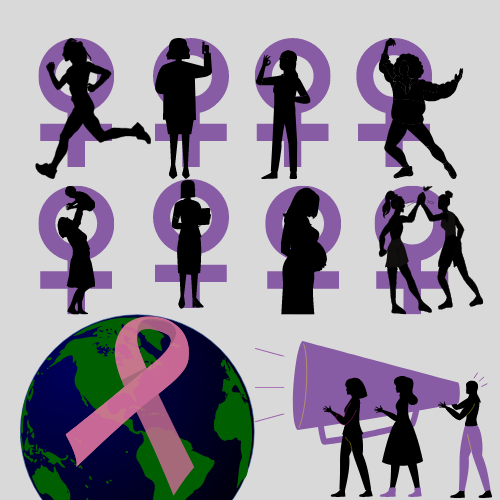It was Russian revolutionary Vladimir Lenin who once said, “There are decades where nothing happens; and there are weeks where decades happen.”
In many ways, 2020 felt as though it was bursting with weeks where history was unfolding before our eyes. And, as is common in history, 2020 left women behind.
The year began with devastating wildfires in Australia, ongoing protests for democracy and independence in Hong Kong, and the deadly eruption of the Taal Volcano in Luzon, Philippines. As 2020 progressed, natural disasters and political unrest seemed to abound. By March, however, a new threat had become a global concern.
The COVID-19 pandemic swept across the world, and along with it a tidal wave of economic disaster, crumbling healthcare infrastructure, racial prejudice, and misinformation.
In 2021, many of the campaigns selected for International Women’s Day (IWD) highlight the unique contributions women have made to the fight against COVID-19, as well as the unequal burden women carry globally – a burden that was greatly exacerbated by the pandemic.
The United Nations’ theme is perhaps the most straightforward. In November 2020, UN Women announced the theme “Women in leadership: Achieving an equal future in a COVID-19 world,” for the upcoming International Women’s Day celebration.
According to the UN, COVID-19 demonstrated both the centrality of women’s contributions to pandemic response efforts and the disproportionate burden placed on women during times of crisis.
From the beginning of the pandemic, it was clear that female world leaders were directing some of the most successful COVID-19 response plans. From Germany to New Zealand to Taiwan to Denmark, female leaders were decisive, transparent, and supportive. Their responses from both a healthcare and a financial standpoint demonstrated political acuity and a keen awareness of how to manage a crisis.
In fact, women have been consistently applauded in this regard, so much so that female leaders have been studied for their successful crisis management since well before the pandemic. With COVID-19 specifically, studies from the Harvard Business Review, the Social Science Research Network, and several other organizations determined that COVID-19 outcomes are systematically better in countries led by women.
Women play a vital role on the frontlines too, making up the majority of essential workers, including healthcare professionals and caregivers. Women also comprise the majority of low and minimum-wage workers who have filled critical retail positions like grocery store employees. In the United States alone, one in three jobs held by women has been designated as essential.
Still, women have been largely excluded from the decision-making process; in addition to being vastly underrepresented in politics and governance, women are rarely consulted during crisis response planning. Even though women were highly active at every level of COVID-19 initiatives, their contributions were underacknowledged, while the roles of male politicians, scientists, and workers were highlighted.
Furthermore, women accounted for a disproportionate percentage of all jobs lost due to the pandemic. Women took on the vast majority of unpaid care work last year, supporting children stuck at home from school and older family members who were at a higher risk from the virus.
Additionally, more jobs were cut in industries dominated by women, while those with higher male employment saw fewer cutbacks. This trend is not new. In the aftermath of the 2008 global financial crisis, male-dominated industries received more support measures allowing more men than women to remain employed.
Although the precise effects of the reduction in female employment cannot yet be calculated, initial findings are harrowing. The rate of women in the workforce is now lower in some countries than it was decades ago. Women are losing crucial job experience, meaning that fewer women will advance to leadership roles than before the pandemic. Lastly, the pandemic has had a significant impact on wages. Research in the United States and Canada has shown that people who leave the workforce for even one year earn consistently less than those without an employment gap.
Just as women were historically confined to housework, they have once again been relegated to the unpaid, underappreciated positions of childcare, housekeeping, and caregiving.
The pandemic affected women in other ways too – from a surge in gender-based domestic violence to widespread issues with personal protective equipment that was designed to fit male bodies and therefore left women exposed.
Thus, as female leaders helmed some of the most successful COVID-19 response plans, women bore the brunt of the pandemic. As women’s contributions transformed the world, women were excluded from the spotlight.
The COVID-19 pandemic offers yet another example of how when women are underrepresented in decision-making positions, their needs and contributions are ignored.
In a year like no other, women made history better. We can’t let history leave them behind any longer.































